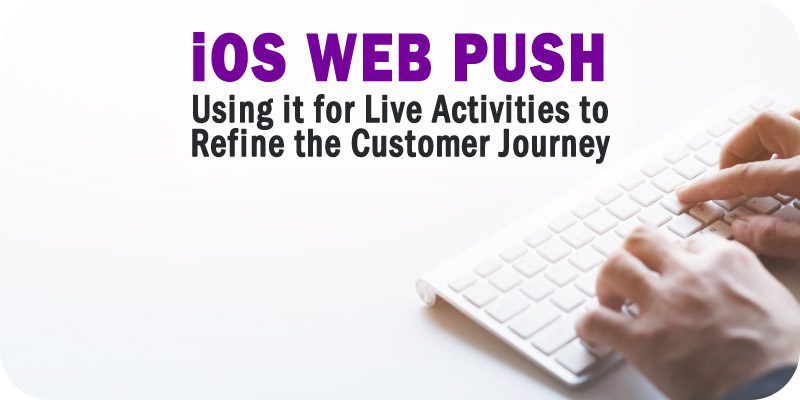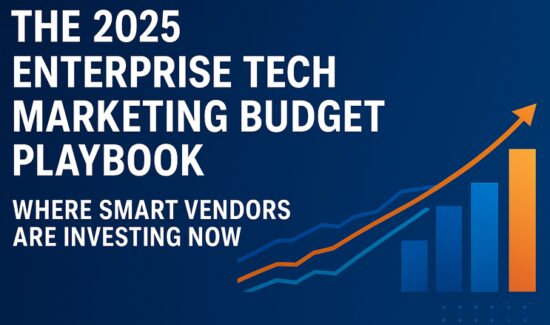Using Apple’s iOS Web Push and Live Activities to Refine the Customer Journey


As part of Solutions Review’s Contributed Content Series—a collection of contributed columns written by industry experts in maturing software categories—Josh Wetzel, the Chief Revenue Officer of OneSignal, outlines how marketers can use Apple’s iOS features to improve and refine their customer journeys.
Businesses thrive when they drive value for their consumers. The key to delivering value is communicating in a way that resonates, educates customers on how to use the product, and solves a problem or desire. This requires engaging users across channels, communications, and content. Marketers, however, must focus on mobile, which isn’t just social media; it’s a mobile-friendly web experience (and/or app), embracing mobile messaging (push notifications, in-app messages), and adopting an omnichannel communication strategy (tying email and when applicable, SMS, to your mobile messaging).
The latest industry data says that users spent roughly 5 hours on mobile per day and 4.1 trillion hours on mobile in total in 2022, which represents the vast majority of your users’ digital engagement, which is a massive opportunity for you.
Over the last five years, Apple’s mobile operating system market share has grown consistently, with opportunities to leverage iOS to enhance marketing efforts and customer journeys. Its most recent advancements—the availability of iOS and iPadOS Web Push support in iOS 16.4 Beta and the Live Activities feature—hold significant promise for marketers looking to leverage these features as part of their channel mix.
In that same five-year period, web push notifications have evolved from a new and little-known channel to one used by over 8 percent of all top websites. This has been an effective strategy for Apple to work its way into the marketing stack while simultaneously driving value for app developers and companies that want to optimize their mobile web presence to communicate with users and customers and drive conversion.
The Significance of iOS and iPadOS Web Push for Marketers
Web push notifications are an essential mechanism websites can leverage to send timely and personalized messages to users. In the past, Apple showed little interest in allowing web push on iOS devices, which significantly slowed the adoption and utility of mobile web push notifications. However, web push is now supported on all primary desktop and mobile platforms, including Android, iOS, macOS, Windows, and Linux, and all major browsers, including Chrome, Safari, Firefox, Edge, Brave, and Opera. This widespread support makes mobile web push an even more valuable and ubiquitous channel for websites to communicate with their users.
One of the most significant advantages of mobile web push is that it provides a lower barrier of entry for consumers to engage with a brand initially. It opens up messaging capabilities to an entirely new audience of previously unreachable people just because they didn’t download an app.
Tapping Live Activities to Drive Loyalty
Another recent advancement from Apple that has benefited marketing teams is the implementation of Live Activities. Live Activities are interactive push notifications that give brands access to potentially the most valuable real estate: a phone’s lock screen. The average smartphone user checks their phone at least 110 times per day.
With Live Activities, marketers can take advantage of this and provide real-time updates to their users directly from their lock screens. This brings several benefits, namely that it gives brands access to the most valuable real estate that exits: the lock screen of a phone an arm’s length away from its user at virtually all times and that they check, on average, up to 344 times daily. Live Activities also excels at nurturing loyalty, showing users the information they want in an accessible format and making it easier for customers to engage with an app, which drives loyalty and repeat purchases.
Live Activities can also help curate a better user experience with control over design and visibility. Marketers can present real-time updates in a cohesive and personalized way, unlike static transactional messages. They also tend to be less disruptive and extend engagement by enabling a company to update a single, interactive notification for up to eight hours while delivering a cleaner, simpler, and more intuitive user experience. It reduces the number of messages sent while making information more readily accessible.
Implementing Emerging Technologies to Improve Customer Journeys
The rising popularity of push notifications doesn’t mean that older channels are becoming irrelevant. What’s important is that the channels, communications, and content used to nurture the customer journey are consistent, personal, relevant, and timely across all touchpoints.
Using multiple channels to communicate with customers has been shown to help companies reach a larger audience, respect audience preferences, improve their user experience, and ultimately boost brand loyalty. Until this point, Apple, a dominant platform, was generally left out of the omnichannel marketing mix. Its latest advancements deliver more responsive and engaging experiences that add delight to transactional experiences to encourage repeat purchases and build customer trust. As new technologies are introduced, marketing teams must leverage them to ensure they communicate with their customers efficiently and effectively to drive retention and acquisition.





















